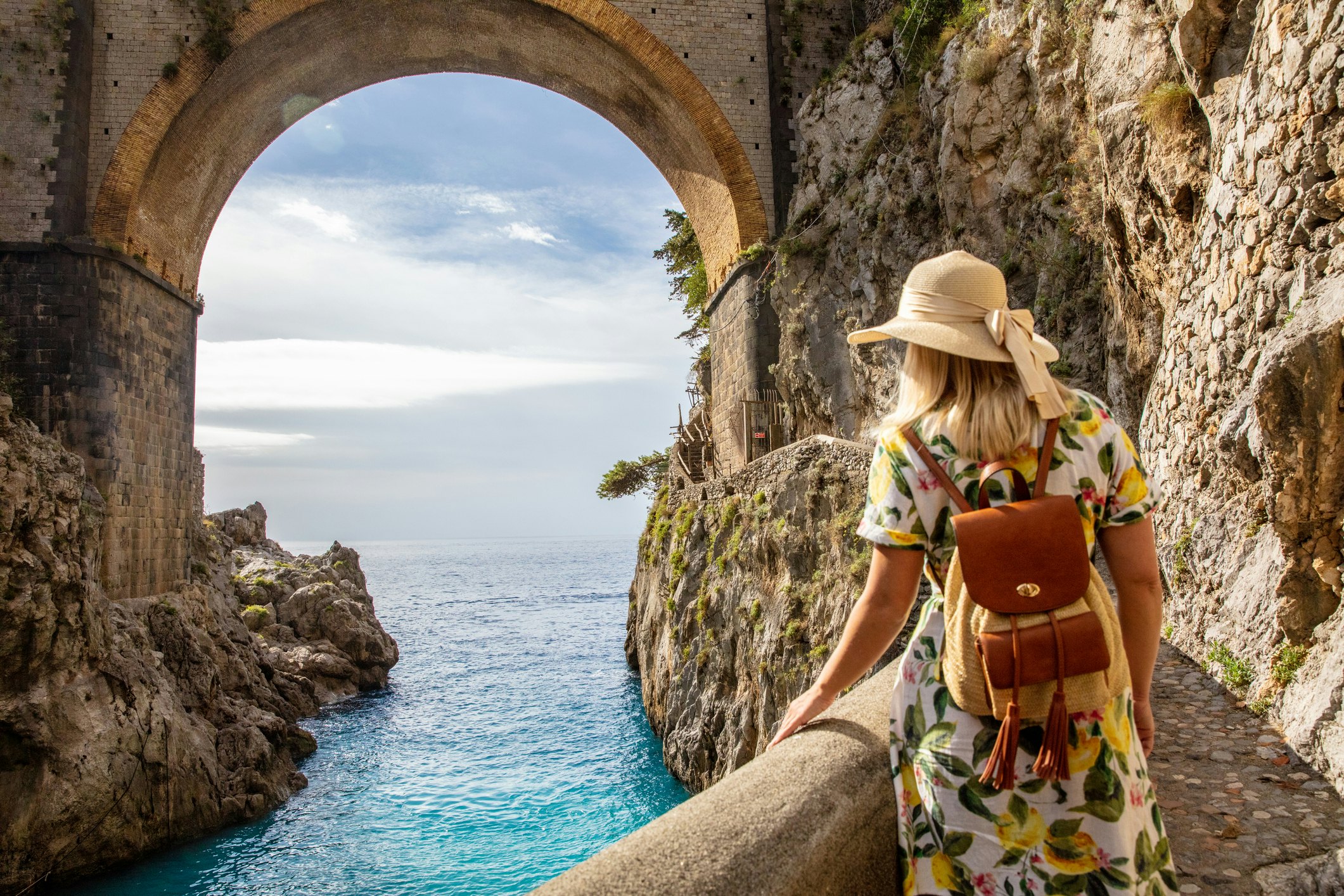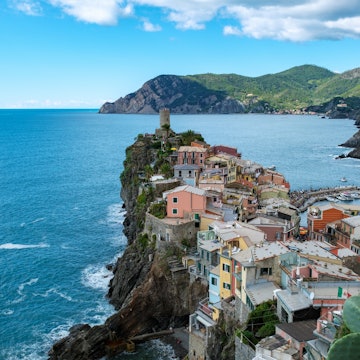
Everything you need to know about getting around the Amalfi Coast

Mar 27, 2024 • 5 min read

Hiring a car can get expensive but it gives you the freedom to explore the Amalfi Coast © Catherine Falls Commercial / Getty Images
Italy’s most famous coast is also one of its trickiest to navigate, thanks to winding clifftop curves, a lack of train service between cities and (sorry, but it's true) tourist traffic.
And all of that is before you even get to the endless flights of stone steps studding its villages and best natural beaches. But the natural cliffs and picturesque ancient steps are just part of this region’s charm, and with a little planning and forethought, you don’t have to miss a beat. Here’s everything you need to know about getting around on the Amalfi Coast.
Rent a car for unlimited exploring
Renting a car provides maximum freedom and comfort, not to mention allowing you to travel as a group and cram as much Vietri pottery as you want into the trunk. But the freedom and comfort come – literally – at a price.
Car rentals in the Amalfi Coast run upwards of €30 per day, to say nothing of tolls (€9/100km) and petrol (approx €1.80 per liter). In high season, parking can be desperately difficult to find and when you’re on the go, you’ll also be sharing the narrow winding roads with many, many other drivers and the SITA buses (see below).
Is it wise to drive on the Amalfi Coast?
Sure, if you’re traveling with a group, small children and have nerves of steel. Just take it easy on the Aperol Spritzes.

Hire a scooter to beat the traffic (but only if you’re a very experienced driver)
Due to the traffic and narrow roads, locals overwhelmingly opt to get around via scooter – enough juice to get you from A to B in a jiffy, yet small enough to dart in between lanes during traffic jams. What could be more romantic than scooting around the snaking cliff-top roads with the lemon-scented breeze in your face?
Well, certainly not getting injured while on holiday. Choose this option only if you’re already a confident, experienced driver – these narrow winding roads are not the place for first-timers to learn. Scooter rentals cost on average around €40 per day in the low season and around €50 per day during the high season.
Use public transport to stretch your euros (and test your limits)
Italy is renowned for its excellently connected train system, but someone forgot to tell the ancient villages of the Amalfi Coast. The only train stations in the area are found in Vietri sul Mare, the town furthest east, as well as Sorrento and Salerno, on either pole of the region.
However, you can take advantage of the extensive SITA bus network that operates throughout the area from Sorrento to Salerno. It will get you between coastal villages and popular mountainous destinations, like Ravello and Agerola (the starting point for the Path of the Gods hike).
See more of the Amalfi Coast with our pick of the best hikes it has to offer.
Riding the SITA bus is a rite of passage for visitors to the Amalfi Coast and a life-affirming experience. Can you say you've lived until you've ridden a lumbering bus along a razor-narrow cliff-top road with a 100m (328ft) death drop to the sea below, as streams of cars, scooters and yes, other buses squeeze past, all angrily honking their horns?
Sign me up! How do you buy bus tickets on the Amalfi Coast?
Download the UnicoCampania app, which allows you to search for bus times, track bus routes in real time and buy tickets online with a European credit card. You can buy public transport tickets at biglietterie (ticket booths) at bus and train stations, as well as at tobacconists. You should also be able to buy them directly on board from the driver, but sometimes they run out – it's best to get them in advance to avoid being left in the dust.

Sail along the coast in style on a ferry
For travelers looking to get from one coastal town to another, the traghetti (ferries) simply can’t be beaten. Often overlooked by visitors in favor of the widespread bus network, the traghetti – operated by several companies including TravelMar and high-speed SNAV – are often quicker than the buses. They can get you from Amalfi to Salerno in 35 minutes and Cetara to Vietri sul Mare in just five minutes – in high season, they’ll be far less crowded.
Plus, there’s nothing like seeing that famous watercolor coastal panorama swim into focus as your ferry bobs towards the shore. Ferries run along the Amalfi Coast region from Sorrento to Salerno, with stops at every coastal village in between (apart from Atrani and Praiano).
How do you buy ferry tickets on the Amalfi Coast?
You can buy tickets online (preferable) or at the ticket booths at the port. Leave yourself enough time if buying tickets in person; there are often long lines and even if you buy a ticket online, you’ll still have to check in before boarding.

Get your step count in
Literally! You’ll have no choice but to get around by foot inside the coast’s exquisite cobblestoned fishing villages, built into the cliffside long before elevators existed; their resulting networks of endless stone steps are both their charm and their curse. Even worse – many of the region's best beaches are also only accessible by climbing flights of steps. But strolling is by far the best way to appreciate the tiny details in the buildings at eye level and, higher up, the stunning views of the Gulf of Naples and the coast itself.
Make sure to wear comfortable shoes and factor the steps in when choosing your lodgings and packing your bags – you’ll likely be dragging those suitcases up dozens of flights of steps to get to your accommodations.
Accessible transportation on the Amalfi Coast
Like much of Italy, the Amalfi Coast is still struggling to improve its accessibility. Its never-ending series of stone steps, razor-narrow cobblestoned streets and subsequent lack of lifts and ramps prove a constant challenge to visitors with mobility issues.
But the town center of Amalfi and the villages of Minori and Cetara with their lovely waterfronts and relative lack of steps are readily wheelchair accessible. In early 2024, Amalfi and Positano waived parking fees for disabled drivers. Visit accessibleitaly.it for more information and accessible tour packages.















